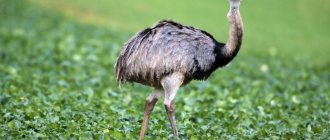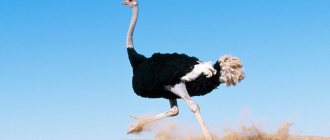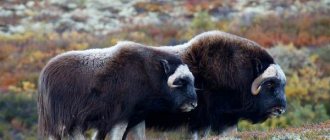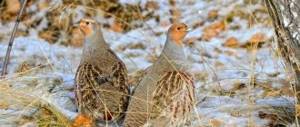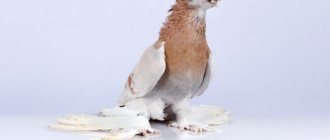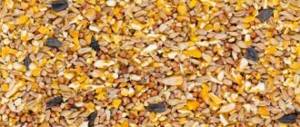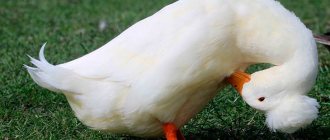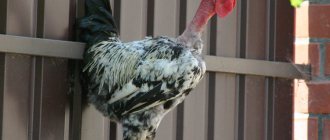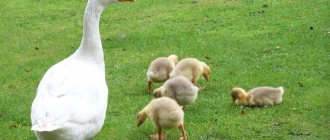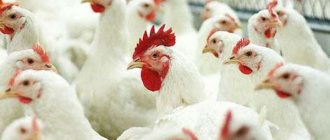Lifestyle and habitat
Giant birds are the original inhabitants of the Australian continent, the island of Tasmania.
They prefer savannas, not too overgrown places, open spaces. Birds are characterized by a sedentary life, although in the west of the continent they move to the northern part in the summer and to the southern regions in winter. The emu most often lives alone. The union of emus into a pair, a group of 5-7 individuals, is a rare phenomenon, characteristic only for periods of nomadism and active search for food. It is not typical for them to constantly flock together.
Farmers hunt birds if they gather in large numbers and cause damage by trampling crops and destroying shoots. While “swimming” in loose earth and sand, the bird makes movements with its wings, as if swimming. Wild birds inhabit areas where trees have been cut down and are found along roads.
Adult birds have almost no enemies, so they do not hide in the open spaces of the fields. Good eyesight allows them to escape at speeds of up to 65 km/h in case of danger. The enemies of the emu are feathered predators - eagles, hawks. Dingo dogs encroach on large birds, and foxes steal eggs from nests.
Emus prefer uncrowded places, although they are not afraid of humans and quickly get used to them. There are no maintenance difficulties on emu farms. The emu is a bird well adapted to different temperature conditions. The Australian giant tolerates cold temperatures down to -20°C and summer heat up to +40°C.
The birds are active during the day; the emu sleeps at night. Rest begins at sunset; the ostrich falls into deep sleep, sitting on its paws. Any irritants interrupt rest. During the night, the emu wakes up every 90-100 minutes. In general, birds sleep up to 7 hours a day.
Thanks to the increased interest in birds, special farms for the industrial breeding of feathered giants have emerged in China, Canada, the USA, and Russia. They adapt well to temperate and cold climates.
Types of ostriches
During the Pleistocene, several varieties existed. But uncontrolled extermination has greatly reduced their numbers and species diversity. As of 2021, only one species is known - African, which includes 4 subspecies:
- Maasai;
- North African;
- Somali;
- Southern.
Even in the last century, Syriac (Arabic, Aleppo) existed. Depending on the variety, birds differ in the color of their plumage, the color of their paws and beak, as well as their edging.
The range of ostriches on the African continent
Common or North African ostrich
The largest subspecies.
Peculiarities:
- height - 2.74 m;
- weight - up to 156 kg;
- the structure of the shell is finely porous, the pattern resembles a star;
- legs and neck deep red;
- there is a bald spot on the head.
Common ostrich
Its habitat until recently covered western and northern Africa, stretching from Uganda in the south to Egypt in the north. Now it has narrowed to the territory of West African countries.
Masai ostrich
Not common in East Africa. There are no significant differences from the listed subspecies. During the mating season, the neck and limbs become bright red. When at rest they are pink.
Female Masai ostrich
Somali ostrich
Similar to the Common Ostrich due to the bald patch on the head. But the legs and neck of males are colored blue-gray, while the feathers of females are brighter, a rich brown hue. Families live in Somalia, northeastern Kenya and southern Ethiopia. They do not form large flocks. The Aborigines call this subspecies "gorayo".
Somali ostrich
Southern ostrich
The birds are distinguished by the gray color of their plumage in the legs and neck. The range affects the southwestern part of the African continent, but is more concerned with Botswana, Namibia, Angola, Zambia and Zimbabwe. Females that reach sexual maturity are much smaller in size than males.
Southern ostrich
Syrian ostrich
Extinct subspecies. It was distributed in northeast Africa. It was considered one of the closest relatives of the Common Ostrich. This variety was inhabited in Saudi Arabia due to its good adaptability to desert conditions.
Syrian ostrich
Birds similar to the African ostrich
There are several species of birds that resemble an ostrich in appearance, but they do not belong to the Ostrich family.
Table 2. Description of exterior features.
| Bird name | Main characteristics |
| Darwin's rhea | Alternative names: Lesser rhea or Long-billed rhea. A flightless bird of large size with gray or brown-gray plumage and characteristic white spots. Back height is about 90 cm, body weight is from 15 to 25 kg. Habitat: southern Argentina, Bolivia and Tierra del Fuego. |
| Cassowary | Height - 1.5 m, average weight - 80 kg. A distinctive feature is a helmet-shaped growth on the unfeathered head. The feathers on the body are black. Two subspecies have bright earrings on their necks. They live in the tropics of Australia, New Guinea and the adjacent islands. |
| Emu | A massive flightless bird from the order Cassowaries. Height - from 1.5 to 1.7 m, body weight - from 45 to 55 kg. The color of the feathers is gray-brown. Widespread in Australia. |
| Great rhea | Common or Northern rhea. Lives in South America. Height - from 1.27 to 1.4 m, body weight - from 20 to 25 kg. The color of the feathers is brown-gray. Sometimes there are albinos with deep blue eyes. |
What do all breeds have in common?
Despite the fact that all breeds of this bird weigh differently, they are united by a number of common details:
- The eggs of this bird are truly the largest on the planet . Even in the smallest breed, one scrambled egg is equal to at least 25 chicken eggs. Eggs of all breeds can not only be eaten - they have an excellent taste and a high content of useful and nutritious substances.
- Ostriches cannot fly, but their wingspan reaches two meters. Wings are used during fights between birds, during courtship dances, or to protect chicks. By the way, birds never hide their heads in the sand - this is a myth. When in danger, birds accelerate to speeds of 50-100 kilometers per hour, depending on the breed and age.
- Most predators in the savannah are afraid of ostriches, since an adult bird can break the skull of even a lion with a kick.
- When there is a lack of food in the wild, birds feed on locusts, although this negatively affects their maximum running speed, and when there is a lack of water, they can even drink salt water.
From the history…
It is believed that ostriches appeared on the planet 12 million years ago. And the trade in the feathers of these animals dates back to the early Egyptian civilizations and goes back three thousand years. In some countries, even before the beginning of our era, animals were kept in captivity. In Ancient Egypt, noble ladies rode ostriches to festive ceremonies. Animal feathers became in great demand at the beginning of the nineteenth century, which led to a significant reduction in the number of birds. In the middle of the century, a period of rapid development of ostrich farming began. The first farm in Africa appeared in 1838. Animals were bred solely for the purpose of obtaining valuable feathers. For example, in South Africa at that time, the export of feathers was in fourth place after the export of gold, wool and diamonds.
Gradually, ostriches began to be bred in captivity in other countries and on other continents: in the USA, Algeria, Egypt, Australia, Italy, Argentina, New Zealand. But during the period of two world wars, this type of business almost ceased to exist, and the number of farms decreased significantly.
Population and species status
Back in the 19th century, they began to practice keeping ostriches in captivity, creating special farms. This made it possible, in conditions of a sharp reduction in the total number of ostriches, to preserve the population of these flightless birds living in natural conditions. Nowadays, dozens of countries have special farms where ostriches are bred.
Special farms made it possible not only to preserve ostrich populations in the wild, but also to obtain expensive feathers and leather, as well as meat that tastes like beef. The lifespan of ostriches is quite impressive, as they live up to 80 years. Due to the fact that ostriches are kept en masse in captivity, the risk of their disappearance from the natural environment is minimal.
Appearance of Emu
When talking about who an emu is, one cannot ignore its appearance. It should be noted right away that these birds do not fly, and therefore their wings are underdeveloped. Their length is no more than 25 cm. At the ends of each wing there is a growth resembling a claw.
The emu's legs are strong and very well developed. Each of them has 3 fingers with especially sharp claws, with which the bird, if desired, can inflict severe injuries or even kill the attacker.
The feathers are brown-gray in color and have a soft texture. They blend well with the environment and allow the bird to remain invisible in the thickets, even with its considerable size. The emu is a bird that is not picky about the ambient temperature, thanks to the special structure of its feathers, which allows it not to overheat on hot days and not freeze even at a temperature of -20 degrees.
The external differences between males and females are minimal, which is why it is possible to distinguish them only during the courtship period, when the male makes peculiar sounds to attract the female. The rest of the time the bird looks the same.
When you decide to start breeding emus, it is better to buy adult individuals from a trusted seller who knows exactly the gender of each animal.
Feeding
The basis of the diet of ostriches with intensive care consists of greens (clover, alfalfa, nettle), vegetables (carrots, pumpkin, cabbage) and grains. In winter, greens are replaced with hay, and vitamin and mineral supplements are required. On average, an adult consumes 3 kg of feed per day.
A separate container with gravel is placed in the poultry house; it helps the bird to grind and digest food.
With the extensive method, in the summer the birds themselves obtain most of the food.
The chicks are not fed for the first few days so that they can fully absorb the yolk and excess moisture from the muscles. From 4-5 days they begin to feed with flour, chopped eggs, gradually introduce greens, cottage cheese, and starter feed for broilers.
Can an ostrich be called an animal?
There is such a stable concept as animals. Even in ancient Greece, during the time of Aristotle, animals were classified as a separate biological kingdom, and this category includes all living organisms living on Earth, including humans and the aforementioned birds.
From this point of view, we can safely call the ostrich an animal, but this will be too general a concept. Of course, the animal kingdom is divided into species and subspecies. Usually in everyday life, animals only mean vertebrate mammals.
In modern science, animals mean all multicellular creatures that live on our planet. Being a multicellular representative of the fauna, the ostrich can be called an animal.
This is purely theoretical, let's list some observations that prove that they are animals, such as domestic ones:
- These large birds are not afraid to attack predators that threaten their offspring. They can rush at a hyena without fear or doubt and protect their nest.
- These birds can often graze with ungulates without fear of them, and feeling at ease. They are frequent visitors to zebra herds. But for example, they do not communicate with other birds. Does this make them animals?!
- Another argument is that animals have good eyesight and hearing. Other birds, with the exception of aces of prey - eagles and hawks, have not very good vision. They can see very far and hear well, just like wild animals.
- They can't fly at all. They have a pair of poorly developed wings that end in two fingers with claws, suggesting that they are not wings, but rather poorly developed paws.
- They run very fast. At short distances, their speed reaches 96 km/h, which is almost like that of predatory cats - cheetahs.
- These long-necked animals can be saddled and ridden like a horse.
In addition to these listed points, and the general concept of animals, these are, perhaps, all the arguments in favor of the fact that the ostrich is an animal. Let's go ahead and get into the details. Let's find out if this long-nose can call himself a bird?
The benefits of ostrich meat
Externally, ostrich meat resembles beef. It is just as red, the fatty inclusions are barely noticeable, and the meat is a lean variety. 100 g of carcass contains 98 kcal, which makes the product dietary, while there is a lot of protein, iron, and zinc inside. Ostrich meat contains a large amount of vitamins B, PP. Among the minerals, potassium, magnesium, iron, phosphorus, and selenium are distinguished. Poultry carcass rarely causes allergic reactions and is well digestible. Among the benefits of meat identified by doctors are:
- strengthens blood vessels and the heart, protecting against early wear and tear and heart attack;
- quickly increases the iron content in the blood, which protects against anemia, including during pregnancy;
- increases psycho-emotional endurance;
- reduces bad cholesterol levels;
- has a beneficial effect on the digestive tract, especially normalizes the functioning of the pancreas.
Ostrich meat is soft and juicy. Tastes like veal with a slight aftertaste
According to world sanitary and culinary standards, ostrich meat is classified as second grade. It is processed into minced cutlets, sausages and sausages. When preparing meat, preference is given to the loin of the bird's thigh.
Features and habitat of the African ostrich
The ostrich is one of the largest birds on earth. The adult weight of the African ostrich reaches 160 kg, and its height is just under 3 meters. An ostrich's head is small in relation to its body, and its neck is long and flexible. The beak is straight and not hard. The mandible has a keratinized growth. The mouth ends right at the eyes. The eyes are bulging with many eyelashes.
The plumage of males is black with white feathers in the tail and at the ends of the wings. Females are gray in color with white feathers at the ends of the tail and wings. The head and neck of an ostrich have no feathers.
The ostrich lacks the ability to fly due to underdeveloped pectoral muscles and underdeveloped wings. Its feathers are curly and loose and do not create strong vane plates. But the ostrich's ability to run fast cannot be compared, even with the speed of a horse. The legs vary in length and strength.
Many people are interested in the question, how many fingers does an African ostrich have? The African ostrich's paw has two toes, one of which is keratinized. It provides support when walking and running. The ostrich egg is distinguished by its large size. One such egg is equivalent to 24 chicken eggs.
The African ostrich lives in savannah and desert areas beyond the forests of the equator. Australia is home to a bird very similar to the African ostrich called the emu. Previously, it was considered a relative of ostriches, but recently it has been classified as a member of the Cassowary order.
The African ostrich has two fingers
This bird is also enormous in size: up to 2 meters tall and 50 kg in weight. The African ostrich in the photo doesn't quite look like a bird, but that's exactly what it is.
Diet and feeding behavior
Ostriches feed on everything that can be found on the ground: seeds, fruits and green parts of plants, insects, small vertebrates, the remains of the meals of birds of prey, even small turtles - everything is used for future use. Ostriches do not have teeth, so to better grind food they swallow small pebbles. Pebbles help grind food in the stomach. Ostriches can go for long periods without drinking water because they get water from plants. However, on occasion they willingly drink and even swim.
In ostriches, urine is excreted from the body in liquid form. In flying birds, the products of the digestive tract and kidneys are excreted together, in the form of a semi-liquid substance of black and white color.
Description and features
The name is translated from Portuguese and Arabic as “big bird”. It is no coincidence that the emu in the photo looks like a cassowary. For a long time it was classified as an ordinary ostrich, but in the updated classification based on the latest research of the last century, amendments were made - the bird was classified as a cassowary, although the traditional combination emu continues to be used in the public and scientific environment. Unlike the cassowary, the top of the relative's head is without a growth on the head.
The appearance of the emu is special, although there are similar features with the cassowary and ostrich. The height of the birds is up to 2 m, the weight is 45-60 kg - indicators of the second largest bird in the world. Females are difficult to distinguish from males; their color is identical - there are slight differences in size and vocal characteristics. Visually determining the sex of a bird is difficult.
The emu has a dense, oblong body with a drooping tail. The small head on an elongated neck is pale blue. The eyes are round in shape. Interestingly, their size coincides with the size of the bird's brain. Long eyelashes make the bird look special.
The beak is pink and slightly curved. The bird has no teeth. The plumage color ranges from dark gray to gray-brown tones, which allows the bird to be inconspicuous among vegetation despite its large size. The emu's hearing and vision are well developed. He sees predators a couple of hundred meters away and senses danger from afar.
The limbs are very powerful - the speed of an emu reaches 50-60 km/h. A collision with it is dangerous and can result in severe damage. One bird's step is on average 275 cm in length, but can increase up to 3 m. The emu's clawed paws serve for protection.
The emu has three three-phalangeal toes on each foot, which distinguishes it from the two-toed ostriches. There are no feathers on the legs. Paws on thick soft pads. In cages with strong limbs they can even damage metal fencing.
Thanks to their strong legs, birds overcome enormous distances and lead a nomadic life. Claws are a serious weapon of birds, with which they inflict serious injuries and even kill attackers. The bird's wings are underdeveloped - the emu cannot fly.
No more than 20 cm in length, the tips with growths resembling claws. The feathers are soft to the touch. The structure of the plumage protects the bird from overheating, so the emu remains active even in the midday heat. Thanks to the characteristics of the feather, Australian inhabitants can tolerate a wide range of temperatures. The bird may flap its wings during its activity.
An amazing feature of the emu is its ability to swim beautifully. Unlike other waterfowl, the emu can swim across a river with a gentle current. The bird loves to just sit in the water. The ostrich's voice combines the sounds of grunting, drumming, and loud screams. You can hear birds 2 km away.
The local population hunted emus for a source of meat, skin, feathers, especially valuable fat, which was used as medicine, served as a valuable lubricant, and was a component of paints for ceremonial body decorations. Modern cosmetology includes emu fat for the preparation of preparations for skin health and rejuvenation.
The modern classification identifies three subspecies of Australian inhabitants:
- Woodward, living in the north of the mainland. Color pale gray;
- Rothschild, living in the southwestern region of Australia. Color dark brown;
- new Dutch ostriches living in the south-eastern part. The plumage is gray-black.
The ongoing confusion between emus and African ostriches continues due to superficial similarities. There are fundamental differences between them:
- in the length of the neck - the ostrich is half a meter longer;
- in the anatomical structure of the paws - emus with three fingers, ostriches with two;
- in the appearance of the eggs - in emu they are smaller and deep blue in color.
African ostrich and emu are different birds in Australia.
Variety of ostriches
Previously, in ancient times, there was a huge variety of ostriches. Today, there is only one left - the African ostrich. It is divided into 4 subgroups:
North African or common. This is the largest subspecies of ostrich. It is also distinguished by its bright red neck and limbs. The head is bald. Bird eggs have a porous shell with a star-shaped pattern.
Masai Ostrich. A distinctive feature is the pink color of the neck and limbs. It is noteworthy that during the breeding season these parts acquire an intense red color.
Somali Ostrich. This subspecies is often placed into a separate category due to differences in DNA. These birds have a blue-gray neck and limbs. Females are distinguished by bright brown feathers. Local residents gave this ostrich the beautiful name “gorayo”. These birds usually live alone or in pairs.
South Ostrich. It has gray shades on the neck and limbs.
Lifestyle
Ostriches live in warm climates, in savannas and semi-deserts. They prefer to live in flocks of up to 10 individuals, including a male, several females and chicks. In pastures they often stay and graze next to zebras.
The diet of ostriches mainly consists of plant foods, which include young shoots of plants, seeds, fruits, and flowers. Nevertheless, they are not averse to eating insects, rodents, as well as carrion, the remains of animals underfed by predators. True to its name - the camel sparrow, it is able to survive for a long time without water in conditions of terrible heat.
During the mating season, males “dress up” by changing their plumage to a brighter one. And they begin to perform “serenades” and shout loudly, thereby attracting potential “brides”, of which the ostrich usually has several. From 2 to 4 females. Afterwards, all fertilized eggs of females of one family are laid in a common nest. The male incubates the eggs with only one female. The chicks are born immediately sighted and capable of movement.
Keeping an ostrich in the household
In the summer, ostriches are kept outdoors in spacious pens, which are fenced with metal mesh (mesh sizes 30 cm by 30 cm). The height of the fence should be at least 2 m, since the bird may try to jump over it. For wintering, wooden or brick poultry houses with a ceiling height of about 3 m are suitable for ostriches. 10 m2 of room are allocated for one adult bird. The floor of the poultry house is lined with straw and shavings, making dry bedding. Part of the stall is covered with sand so that the ostriches can take their favorite sand baths. During the mating season, males dig small holes in the floor for further arrangement of the nest. Such depressions are filled with clean sand, and then the females lay eggs there. It is also important to take into account that males become very aggressive during the mating season. Feeders for ostriches are placed under canopies at the rate of 1.5 m per adult bird and 0.5 m per chick. Birds should have plenty of room at the feeders to avoid crowding. The feed containers are made comfortable, about 1 m in height, and stable, filled to a maximum of 2/3. At a height of 0.5 m from the floor, you can also attach separate mangers for hay and grass. Large troughs are used as drinking bowls.
Which bird to choose for breeding?
Ostrich farms first appeared in the 1830s in South Africa. Later, over time, more and more such farms appeared. Over the 30 years of development of ostrich farming, the number of ostrich farms has increased 3 thousand times. Ostriches were bred only for feathers; no other products were obtained from them at that time. Feathers were carefully cut off near the skin approximately every six months, which allowed the owners of such enterprises to make high profits.
Then came the world wars, and the number of farms involved in ostrich breeding decreased significantly. Ostrich farming was “reborn” again in the 1980s. Then they began to use birds not only for feathers, but also for meat and skins.
In the field of agriculture today, an ostrich farm is a type of business that occupies a leading position among the most profitable. It turns out to be an almost “full cycle” enterprise.
Today there are approximately 650 farms in Europe. In Russia, these birds have been bred for a relatively short time; they are bred in the Krasnodar and Perm regions, in the Volgograd region.
It is better to buy adults, since mortality among ostriches is high. In order to start breeding ostriches, you need a family of one male and at least two females.
The most suitable for breeding are several varieties of ostrich.
- With a black neck. These birds were bred by crossing Malian ostriches with South African ones. They are distinguished by their intelligence, easily adapt to new climates and conditions, and are most suitable for our climate. The feather obtained from such birds is of high quality.
- With a blue neck. These are ostriches bred by crossing Somali and South African ostriches. They are not as productive as black-necked ostriches, but are more tolerant of humans and have high reproductive rates.
List of interesting facts about ostriches:
- the weight of a male can reach 150 kg;
- record-breaking birds can run at speeds of up to 90 km/h;
- The emu is native to the island of Tasmania;
- A distinctive feature of the kiwi is 4 toes, while ostriches have only 2.
See below for more details.
Productivity
Historically, ostriches of different species have been useful in different ways - for example, the feathers of the African ostrich were in great demand in the production of various jewelry, and the shells of their eggs could well be used as a goblet among some African peoples. In addition, "Africans" could be used for harnessing horse-drawn vehicles and even riding horses, and emu fat was for some time considered a valuable medicine. But today there is a certain demand for the skin of both types of birds, but its truly widespread use can only be considered in those countries where there are many ostrich farms, and these are perhaps South Africa and Australia. In all other countries, the main reason for breeding these large birds today is meat and eggs.
Despite the fact that African ostriches and emus have not been considered biologically related for several decades, their meat is quite similar. Experienced gourmets claim that it is reminiscent of beef, but at the same time it is even less fatty, which in times of widespread popularity of healthy eating may be of interest to many consumers. Emu meat, whose fat content does not exceed 1.5%, should be considered especially lean.
Ostrich eggs are not the main product of this branch of poultry farming, if only for the reason that females do not lay them very often, but the size of such an egg can impress anyone. If we talk about the African subspecies, its egg is an impressive 15-21 cm long and weighs a good 1.5-2 kilograms, which is equivalent to about 25-36 average chicken eggs
Against this background, it is no longer so important how many eggs one female lays per year - there will definitely be a demand for them. The volume of a clutch in the wild can range from 15 to 60 eggs, but here you need to take into account that several females “belonging” to one male make a common clutch
Farmers have calculated that at home, a young ostrich produces 20-25 eggs per year, while an experienced female 6-7 years old can lay up to 70 eggs annually.
Emus, as birds of more modest size, have egg dimensions that are also not so impressive. The number of eggs from one female in a clutch can range from 7-8 to 20 eggs, their average weight is approximately 700-900 grams. As is the case with their African counterparts, in one emu nest the “products” of several females can be collected at once, directly related to the same male.
Among other things, African ostrich feathers have not yet completely gone out of fashion - they can still be sold profitably. At the same time, the bird is not inclined to lose elements of its plumage, and you should not try to tear them out either - instead, the feathers are carefully cut off close to the skin. To harvest such a “harvest,” it is necessary to wait until the bird is at least 2-3 years old—feathers among young people are considered useless.
How to identify good meat?
To distinguish fresh meat from bad or fake meat, just follow the following instructions:
Table 2. How to determine the freshness of ostrich meat.
| Step, no. | Description | Photo |
| Step 1 | Pay attention to the color of the product, fresh meat of a uniform shade with a small amount of fat. | |
| Step 2 | Press the carcass and evaluate its elasticity; it should not be soft. | |
| Step 3 | Smell the meat; the smell should be pleasant without any trace of rotten meat. | |
| Step 4 | Look through the entire piece of fillet; there should be no mucus on it. If possible, smell the ostrich fillet and then the beef, this will protect you from buying a fake, they should not smell the same. |
Attention! It is not recommended to store ostrich meat in the refrigerator for more than a day. If long-term storage is necessary, it is better to store the fillet in one piece in the freezer. This way the meat can be preserved for 6 months. It is not recommended to store minced ostrich meat for more than three months. At the same time, you cannot add spices, bread, or other additional ingredients to the meat in advance.
The ostrich often mistakes a person for an enemy
Reproduction
Ostriches in the zoo of the city of Krasnoyarsk (Siberia, Russia) The ostrich is a polygamous bird.
Most often, ostriches can be found in groups of 3-5 birds - one male and several females. Only during non-nesting time, ostriches sometimes gather in flocks of up to 20-30 birds, and immature birds in southern Africa - up to 50-100 individuals. During the mating season, male ostriches occupy a territory of 2 to 15 km², driving away competitors. When the time comes for breeding, male ostriches display in a peculiar way, attracting females. The male lowers himself onto his tarsus, beats his wings rhythmically, throws his head back and rubs the back of his head against his own back. During this period, the male’s neck and legs become brightly colored. When competing for females, males make hissing and other sounds. They can trumpet: to do this, they take in a full crop of air and forcefully push it through the esophagus - while doing this, a semblance of a dull roar is heard.
The dominant male covers all the females in the harem, but forms a pair only with the dominant female and hatches the chicks with her. All females lay eggs in a common nesting hole, which the male scrapes out in the ground or sand. Its depth is only 30-60 cm. Ostrich eggs are the largest in the bird world, although relative to the size of the bird itself they are small: egg length - 15-21 cm, weight - from 1.5 to 2 kg (this is approximately 25-36 chicken eggs ). The shell of ostrich eggs is very thick - 0.6 cm, its color is usually straw yellow, less often darker or white. In North Africa, the total clutch usually consists of 15-20 eggs, in the south of the continent - 30, in East Africa the number of eggs reaches 50-60. Each female lays eggs apparently once every 2 days.
When the dominant female has laid all the eggs, she demands that the other females leave, rolls her own eggs into the center of the clutch (she distinguishes them by the texture of the shell) and begins incubation.
Ostrich egg compared to chicken and quail eggs
Masonry
The eggs are incubated alternately by females during the day (due to their protective coloration, blending into the landscape), and by the male at night. Often during the day the eggs are left unattended and heated by the sun's rays. Incubation lasts 35-45 days. However, often many eggs, and sometimes all, die due to insufficient hatching. The chick breaks the strong shell of an ostrich egg for about an hour, sometimes more. It rests one foot on the blunt end of the egg, the other foot on the sharp one, and hits one place with its beak until a small hole appears. Then he makes a few more holes like this. Then, in order to break its way out, the chick hits the shell with the back of its head, so African ostrich chicks hatch with hematomas on the back of their heads, which quickly disappear.
When the chicks hatch, the adult bird breaks the eggs, which are definitely spoiled (usually they lie on the edges). Flies flock to them and serve as food for the chicks.
Ostrich chick
Ostrich chicks hatch sighted, covered with down and capable of movement. A newly hatched ostrich weighs about 1.2 kg, and by four months it reaches 18-19 kg. The chicks leave the nest the day after hatching and travel with their father in search of food. During the first 2 months of life, the chicks are covered with brownish, hard bristles, then they dress in an outfit similar in color to that of the female. True feathers appear in the second month, and black feathers in males appear only in the second year of life. Ostriches become capable of reproduction at 2-4 years of age. African ostriches live like people, that is, on average 75 years.
The chicks are tightly attached to each other. If two groups of chicks get too close, they mix and cannot be separated. Parents fight with each other. The winners take care of all the chicks. Therefore, groups of chicks of different ages are often found.
The Story of Life at the Zoo
African ostriches have been kept at the Moscow Zoo almost from the very beginning of its existence.
These birds are quite unpretentious and hardy; they can walk even in winter, although they definitely need a warm pavilion.
Currently, at the Moscow Zoo, the ostrich is exhibited in the New Territory in the “Animals of Africa” pavilion. We have an ostrich named Marfa, born in 2005. Marfa makes friends with a female giraffe, lives with her in the same enclosure, and they spend all their time together. If for some reason they are separated, both miss each other. In the summer, when all African animals can walk for a long time in a large outdoor enclosure, Marfa and her friend the giraffe play catch-up, sometimes a zebra joins them.
Since the ostrich is an omnivorous bird, there are no problems with feeding. At the zoo, the ostrich receives compound feed and fresh food: carrots, potatoes, beets, apples, fresh and dry branches and mice. In the summer, Marfa enjoys nibbling grass in her outdoor enclosure.
Since in nature ostriches swallow pebbles to better grind food in the stomach, in captivity they can swallow various foreign objects: nails, pieces of plastic, glass, so zoologists carefully ensure that there are no dangerous objects in the ostriches' enclosure.
Ostriches sleep just like platypuses
A sleeping ostrich can even walk
Ostriches have survived thanks to habits that defy the laws of common sense: they sleep standing up, holding their heads high and blinking frequently. Previously, scientists thought that birds fall asleep this way, but it turned out that at this time they are already in the deep sleep phase. Most often, it is not even clear whether the ostrich is sleeping or awake.
These birds also have an important feature: they can very quickly move from one phase of sleep to another. This allows them to get enough sleep in short periods of time and not be caught off guard. In this, ostriches are similar to platypus and echidna. Only in this trio the sleep mechanism works in a similar way. According to the researchers, the ability to quickly switch between deep and REM sleep existed in all animals in ancient times, but was lost over time during evolution.

